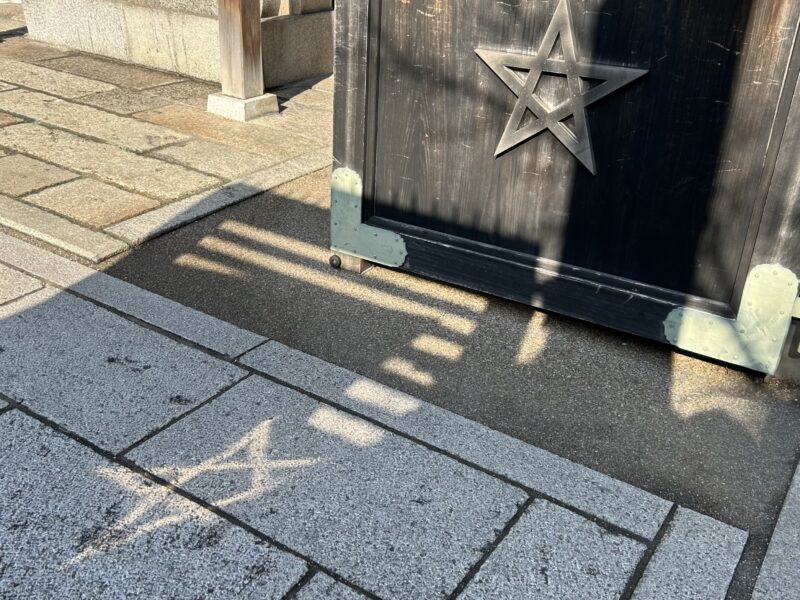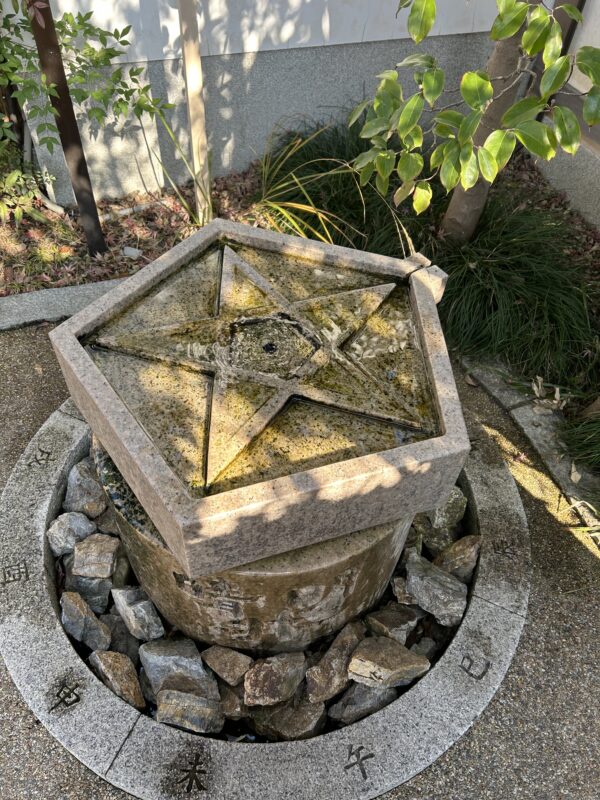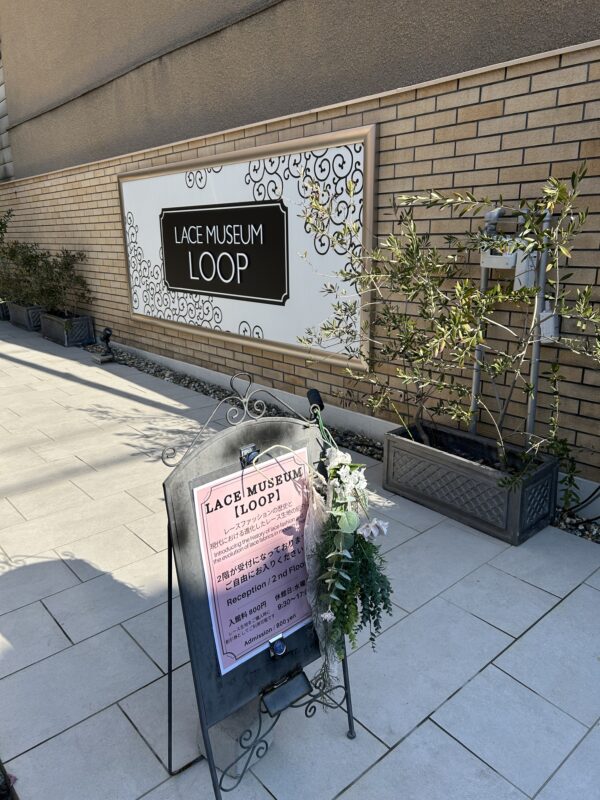
2025.01.15

魔除け、厄除けに強い御利益がある五芒星のマークの御守り。
京都では車やバイクにこのステッカーが貼ってあるのをよく見かけます。
これは、平安京で活躍した日本史上屈指の陰陽師安倍晴明を祀った
西陣エリアにある晴明神社の御守りです。
時に、家の玄関先に貼ってあるのを見かけることもあります。
晴明神社は私も年に数回は参拝したくなり毎年御札を授かっています。
こじんまりとした境内はいつ行っても手入れが行き届き、
とても清潔で気持ちが良い空間が広がっています。
正月明け、境内の真ん中に置かれているおみくじは最新スタイルでした。
なんとタブレットの上で手を数回左右に振ると番号が出てくるので
その番号をおみくじを自分で棚から取り出して授かるのです。
最近はガチャガチャのカプセルでおみくじを引くスタイルの神社もありますので、
それよりも更に最先端をいっているなと驚きました。
桔梗の鉢が敷地内に並べられる時期には可愛らしい桔梗守、七夕の時期には天の川と星の柄の七夕守、
秋にはもみじ守が授けられます。
タイミングが合えば季節限定のお守りを是非授かってみてはいかがでしょうか。
晴明神社の御守りは、とても心強いのです。



晴明神社参拝の後は、神社から徒歩6分程の場所に、
珍しいレースのミュージアムLACE MUSEUM【LOOP】がありますので行ってみました。
アパレルブランドにレースを卸しておられるレース生地メーカーが運営されている施設です。
住宅街の中にある、きれいな建物の会社の2階と3階部分がミュージアムです。
ここでとても興味深かったのは、レースの歴史の展示説明でした。
16世紀のベネチアでは商業貿易が盛んとなり、贅沢な生活が広まると職人たちも腕を磨き、
より繊細で複雑なレースの装飾の技法が生み出されていったそうです。
ボビンレースとニードルポイントレースの製作の写真を見ると、
気が遠くなりそうな細かい手仕事ですが、完成形のレースを見るとなんとも心がときめきます。
ヨーロッパでは学校でレース制作が授業でも取り入れられていたそうです。
小さな子供達が編んでいる様子の写真を見て驚きました。
職人だけではなく、家庭の中でも女性たちが手仕事であの細やかなレースを編んでいたことに
尊敬と感心しかありません。



ゆっくりと目を通してみたいレースにまつわる本も沢山ありました。
ミュージアムの3階の一角にはレースの反物が販売されています。
洋裁や小物作りが好きな方にはとても魅力的なコーナーです。
また展示されているレースで作られた十二単の着物は、袖を通してみたい気持ちになりました。
王族や貴族たちに愛されたレースは、今の時代にも小物やファッションに多く使われています。
そのルーツを知るのも楽しいひと時となりました。


In Kyoto, I often see a star sticker on cars and motorcycles. This is a good-luck charm from the Seimei Shrine in the Nishijin area, which is dedicated to Abe Seimei, one of the most famous yin-yang masters in Japanese history who was active in the Heian-kyo capital. I also like to go there several times a year and receive the amulet every year.
The small shrine grounds are always well-maintained and very clean and pleasant. At the beginning of the New Year, the omikuji, fortune card in the center of the shrine was the newest style. You wave your hand over the tablet several times to the left and right to get a number, which you then take out from the shelf to give yourself the omikuji. I was surprised to see that this was even more cutting-edge than the recent style of drawing omikuji from gacha-gacha (capsules machine) at some shrines.

After visiting Seimei Shrine, I went to LACE MUSEUM [LOOP], a rare lace museum located about a 6-minute walk from the shrine. This facility is operated by a lace fabric manufacturer that wholesales lace to apparel brands.
The museum is located on the second and third floors of a beautiful company in a residential area.
What was very interesting here was the explanation of the history of lace: as commercial trade flourished in Venice in the 16th century and a luxurious lifestyle spread, craftsmen honed their skills and developed more delicate and intricate techniques for lace decoration. The pictures of bobbin lace and needlepoint lace production show the detailed, almost mind-boggling handwork, but the finished lace is very attractive to look at. In Europe, lace making was incorporated into classes at schools. I was surprised to see pictures of small children making laces. I have nothing but respect and admiration for the fact that not only artisans but also children at school and women at home were weaving such fine lace by hand.
There are also many books about lace that you can take your time to look through.
In one corner of the museum’s third floor, lace fabrics are for sale. This is a very attractive corner for those who enjoy sewing and making accessories. I also wanted to try on a junihitoe (12-layered kimono) made of lace on display.
Lace, loved by royalty and aristocrats, is still used in many accessories and fashion items today. It was a fun experience to learn about its roots.
Mikko


